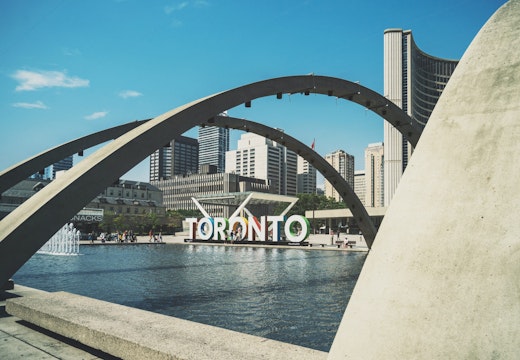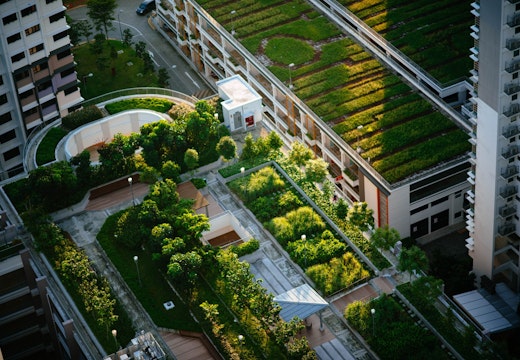Key themes in the Golden City: what we learnt in San Francisco
With a reputation for future-forward innovation, WORKTECH’s 2019 San Francisco conference didn’t disappoint with discussions of neural experience, progressive wellness and smart human-machine collaboration
San Francisco has always welcomed innovation, and more than 20 speakers from some of the world’s best-known brands and research institutions joined WORKTECH line-up in 2019 at the Mission Bay Conference Centre on 29 October. From the neuroscience of space and sensory delight to communication’s ‘second act’ and human-machine augmented intelligence, the speakers set out a manifesto for the future around three key themes.
Communication and culture
The question of communication was first on the stand, with an opening keynote from David Firth, Principal at The High-Performance Communication Academy, discussing ‘Communication’s Second Act’. Firth’s rallying cry centred around making people the source of change rather than its victims or objects – by unleashing an entrepreneurial spirit of creativity and ownership. This, he suggested, is not a top-down or even bottom-up shift, but an inside-out one. Crucially, true organisational change comes about through communication and creating a ‘want to’, not a ‘have to’, culture.
In the context of the competitive and high-pressure environment that surrounds the tech industry, Lian Han, Director of Strategy at Beyond, opened the next session with the statistic that there are five times more cases of depression in technology that in other industries. However, there are brighter days ahead, and Han set out some progressive approaches in tackling the biases around mental health such as using sick days as wellness days – and encouraging employees to take them to rebalance.
Elizabeth Vereker and Mindi Weichman from Studio O+A took to the stage to share two high profile case studies: Nike in Oregon and McDonald’s in Chicago. Both directors emphasised the importance of understanding the cultural DNA of a company in developing the design of the space, with creating an experience and telling a story just as important as settings which respond to how employees need to work.
Experience to the fore
A future of work panel discussion placed experience front and centre, with Tim Clark, Senior Project Manager, Global Real Estate, Airbnb and Jeremy Kopstein, Senior Manager, Workplace & Real Estate Technology, at Uber, agreeing that intense competition for talent had made employee experience a key concern. While there were some differences in approach, both agreed on the need for a customer-centric design approach that prioritises choice and variety.
Jill Marchick and Andrew Levy from Aramark were joined by Alison Zeno, Workplace Experience Specialist at Boston Consulting Group Platinion’s Smart Environments Group, to launch Aramark’s latest report – Work XP ‘Experience Matters’. Chaired by the WORKTECH Academy’s Development Director Esme Banks Marr, the discussion covered the organisations, sectors, and geographies that are currently winning the global race for talent, the innovations they are using to stay ahead in terms of workplace experience and what the impact of this is on leading organisations.
Shifting from the war for talent to our individual cognitive responses to spatial stimuli, Dr Eve Edelstein, director at Perkins+Will, talked about the importance of applying a neuro-architectural approach to spatial design in enhancing human experience, performance, health and wellbeing.
Following on, Dr Gail Brager, Professor and Associate Director at the Center for the Built Environment at University of California Berkeley spoke of the benefits of sensory delight – from biophilic design, personal control, enhanced air movement, alliesthesia (i.e. thermal delight) and experiential space. The future workplace needs to embrace variable, multi-sensory indoor environments, where people have opportunities to connect to nature, fine-tune conditions to match their personal preferences and positively impact rich human experience.
Expert panellists Mark Gilbreath of LiquidSpace, Robert Teed of ServiceNow and Scott Hazard at Atlassian took on the ‘Flexible Office Economy’ debate. They rounded off the discussion on experience, concluding that they had made the shift to experience being their fundamental product – not space.
A digital human future
The afternoon then turned to our digital future, with H. James Wilson from Accenture Research discussing his new book Human + Machine: Reimagining Work in the Age of AI. Wilson highlighted the need for humans and smart machines to collaborate closely in the AI paradigm shift. He argued for six new types of hybrid human + machine roles that every company must develop in order surge ahead – or even stay in the race. Far from being a futuristic proposition, AI is already here.
Brady Watkins of SoftBank Robotics talked about how automation is enabling innovators in the workplace to really drive forward in the ‘race for a better tomorrow’. Using robotics as a physical application of automation, organisations can create value across real estate, vendor and innovation initiatives. With the automation inflection point coming, Watkins similarly called for those who wanted to stay ahead to get on board.
‘The automation inflection point is coming…’
Dan Ryan, CEO at VergeSense, showed delegates a glimpse of AI-powered vision sensors, and then examined how he believes this is shaping the future of the workplace. This kind of technology is redefining the whole life-cycle of real estate management; VergeSense’s solution being used across more than 15m sq ft of office space and the fact ‘the average office building was only 40 per cent utilised last year’.
Dr Skyler Place, Chief Behavioural Science Officer at Cogito Corp, closed the conference with a talk on how increasingly human-aware AI could be used to augment the workforce, reinforcing strengths and buttressing weaknesses, and resulting in a more productive, emotionally intelligent workforce. This might take the shape of AI coaches, training employees to be more emotionally intelligent; the key is in embracing augmentation, where AI technologies complement and improve human behaviour, rather than replacing it.
In this context, San Franscico’s embrace of future innovation looks like taking another significant turn.






